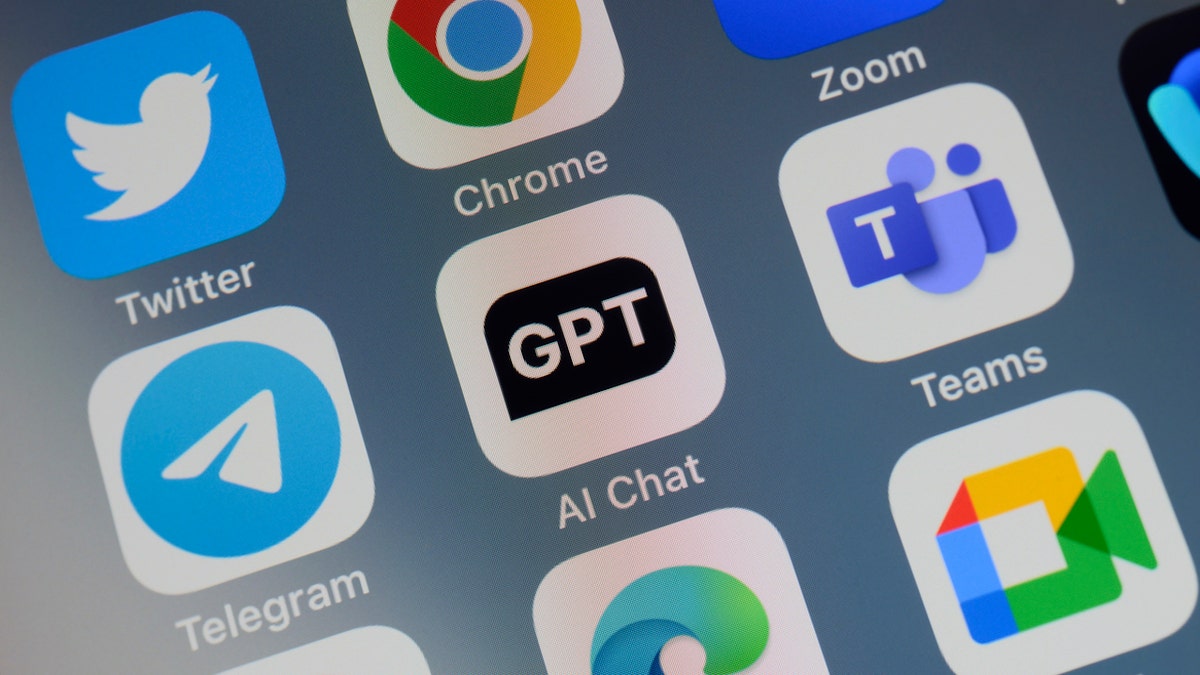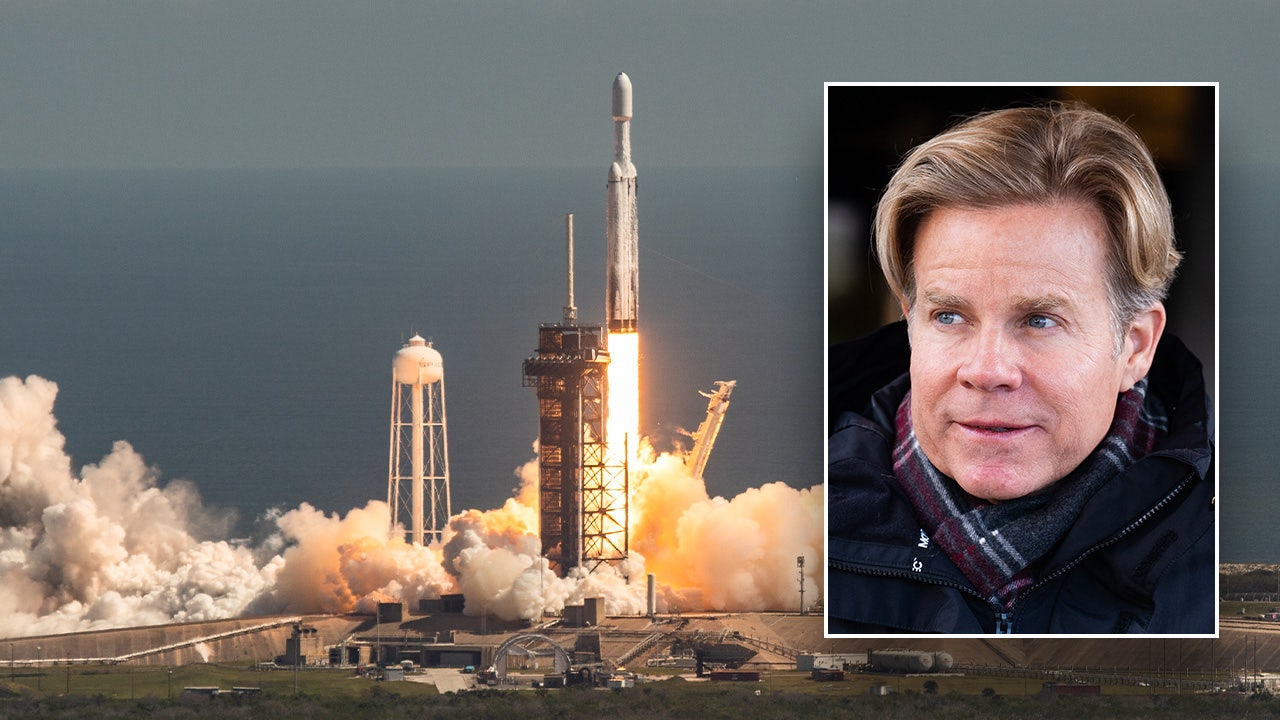At CES 2025, Intel let journalists into its private “Innovation Showcase,” where we saw things like prototype next-gen laptops and giant stereo 3D handheld gaming PCs.
Technology
Long-time Google exec Susan Wojcicki has died at 56
/cdn.vox-cdn.com/uploads/chorus_asset/file/25566661/454688286_10162253797240312_4972473333184729900_n.jpg)
Googlers,
By now you may have heard the news that Susan Wojcicki has passed away after two years of living with lung cancer. Even as I write this it feels impossible to me that it’s true. Susan was one of the most active and vibrant people I have ever met. Her loss is devastating for all of us who know and love her, for the thousands of Googlers she led over the years, and for millions of people all over the world who looked up to her, benefited from her advocacy and leadership, and felt the impact of the incredible things she created at Google, YouTube, and beyond.
Susan’s journey, from the garage she rented to Larry and Sergey … to leading teams across consumer products and building our Ads business … to becoming the CEO of YouTube, one of the world’s most significant platforms, is inspiring by any measure. But she didn’t stop there. As one of the earliest Googlers — and the first to take maternity leave — Susan used her position to build a better workplace for everyone. And in the years that followed, her advocacy around parental leave set a new standard for businesses everywhere. Susan was also deeply passionate about education. She realized early on that YouTube could be a learning platform for the world and championed “edutubers” — especially those who extended the reach of STEM education to underserved communities.
Over the last two years, even as she dealt with great personal difficulties, Susan devoted herself to making the world better through her philanthropy, including supporting research for the disease that ultimately took her life. I know that was very meaningful to her and I’m so glad she took the time to do it.
Susan always put others first, both in her values and in the day to day. I’ll never forget her kindness to me as a prospective “Noogler” 20 years ago. During my Google interview she took me out for an ice cream and a walk around campus. I was sold – on Google and Susan.
I feel so fortunate to have spent so many years working with Susan closely, as I’m sure many of you do — she was absolutely loved by her teams here. Her time on earth was far too short, but she made every minute count.
We’re in close touch with Susan’s family, including her husband and fellow Googler, Dennis. We will share more soon about how we’re going to celebrate her incredible life. In the meantime, let’s honor Susan’s memory by continuing to build a Google she would be proud of.
-Sundar

Technology
Intel still dreams of modular PCs — it brought a tablet laptop gaming handheld to CES
/cdn.vox-cdn.com/uploads/chorus_asset/file/25826491/PXL_20250106_223233485.jpg)
While I was there, I also spotted a heavy metal handheld on a table that didn’t seem… fully attached… to its screen. When I lifted the screen, it came away easily.
It felt suspiciously light to be a real tablet, so I flipped it over and saw three connectors underneath:
Above it, on a shelf, was a laptop with a suspiciously sized chunk of plastic on the bottom that looked like a perfect match. A minute later, Intel gaming evangelist Colin Helms confirmed: I was looking at a concept modular PC.
That module contains a complete Intel Lunar Lake computer, the entire guts you’d need to make one work outside of peripherals and screen. It’s basically a reboot of Intel’s abandoned Compute Card idea, except it’s not all Intel’s doing and you probably shouldn’t ever expect it to ship.
It’s a concept from Quanta, a company whose name you don’t typically see on the laptops and tablets they create, because Quanta is an ODM (like Compal, Pegatron, Wistron, and Apple’s better known iPhone supplier Foxconn) that designs and manufactures hardware on behalf of brand names.
Quanta’s calling the whole modular system the “AI8A,” and the aforementioned module at its heart is the “Detachable AI Core.” Helms told me it plugs into other concept computers as well, including an all-in-one desktop that Intel didn’t have to show off. And presumably, like the Compute Card idea, you could upgrade your computer just by putting a new new module into it.
The modular laptop has lots of concept-y bells and whistles too, so many that Intel’s CES staff hadn’t even worked them all out yet.
For starts, the laptop has a motorized hinge, so you can tell it to open and close its own lid; it also claims to offer eye-tracking that lets you sling around multitasking windows just by looking at where you’d like them to be. It apparently comes with a mouse integrated into a ring that you could wear.
The most mundane: a built-in Qi wireless charging pad in the palmrest, with indicator lights to show your battery’s remaining capacity.
I couldn’t try any of it working, unfortunately, nor did I manage to ask what “AI8A” means, because I mistakenly thought it said Aiba until I checked my photos closely just now. Nor could we hotswap the module between the handheld and laptop, since the module apparently doesn’t have a battery inside.
Again, this is a cool computing concept car: it’s not likely that this computer will ever ship, even in a more practical / less gadgety form. Thankfully, we have begun to see some real, practical modularity in the laptop space since the death of Intel’s Compute Card. Framework just celebrated its fifth anniversary this week, and Dell took a smaller step forward at CES with its first modular repairable USB-C port.
Photos by Sean Hollister / The Verge
Technology
AI isn’t going anywhere: Prompts to make life easier

I was having dinner with my husband in Paris. We got the wine menu and all the names, of course, were in French. Barry wanted something equivalent to a Napa cabernet, so I took a picture of the menu and asked ChatGPT. In seconds, it recommended a wine. I double-checked with the waiter, and he gave it a thumbs-up.
Win a pair of $329 Ray-Ban Meta smart glasses. Enter here, no purchase necessary!
You might think AI is just for businesses, programmers, or the ultra tech-savvy, but it’s not. It’s for anyone willing to give it a try.
AI EXPERT: CHATGPT PROMPTS YOU’LL WISH YOU KNEW SOONER
Instead of ignoring this powerful tool, make this the year you embrace AI. It’s easier and more helpful than you think.
Let’s start with the basics
“So, uh, where do I find ChatGPT?” I get that in my email every day. Use it on the web or download it for iPhone or Android.
The free tier works for most people. I pay $20 a month for ChatGPT Plus. It’s worth it to me for access to the better features and faster response times. Start with free. If you find yourself relying on your favorite AI tool regularly, consider upgrading. It is worth considering.
A man is pictured working on an airplane and using a cellphone. (iStock)
ChatGPT isn’t the only option, but it is my preference (at least for now) and the most popular. You can also try Google Gemini, Perplexity and Claude.
With all these, the workflow is the same. Think of it like Google, but instead of punching in one search term and scrolling through results, you have a “conversation” with the bot to get exactly the output you want.
Like any tool, you need to use AI wisely and triple-check its results. Trust me, you don’t want to end up like those lawyers who used AI to draft court documents, only to have the judge catch the glaring mistakes.
BIOMETRIC DATA: IS IT SAFE TO HAND IT OVER TO ANY COMPANY THAT ASKS?
You’ve heard of prompts, right?
This is what we call the text, question or command you provide an AI system to guide its response or action. It’s your instruction on what you want, so the better your prompt, the more useful and accurate the response will be.
“Priming” is the insider term for telling a chatbot exactly what you want from it. With ChatGPT or any other, the more constraints you give, the better your answer. Examples: “Limit your response to 250 words,” “Give me the list in bullet points,” “Format the results as a table,” “Use this data to create a bar chart.”
Remember, AI can’t read your mind. It only knows what you tell it. Use “do” and “don’t” in your prompts to get the results you want. Say you’re cooking for friends, and some have allergies. Say, “Create a recipe for six people. Do include protein, fruits, vegetables and carbs. Don’t include dairy products, shellfish or nuts.”

Close-up of the icon of the ChatGPT artificial intelligence chatbot app logo on a cellphone screen. (iStock)
7 prompts to make life easier
Make your goals actionable: “I have a goal for 2025 to [fill in the blank]. Can you help me make it SMART?” (SMART is an acronym for Specific, Measurable, Assignable, Realistic and Time-related.) Maybe you’re not there yet. Try this: “I want to [fill in the blank], but it feels overwhelming, and I don’t know where to start. Can you help me by breaking it down into more manageable tasks?”
“Give me 10 more examples”: That’s a prompt I use with ChatGPT all the time to make the chatbot a better brainstorming buddy. Some of its “ideas” are downright bad, but it might spark something creative in your brain, too.
“How can I make this better?” Add in anything you’ve written — a blog post, a travel plan, a resume or even a heartfelt email. This prompt works wonders for polishing your work and pointing out improvements, like a personal editor at your fingertips.
DO THIS WITH YOUR FAMILY VIDEOS BEFORE IT’S TOO LATE
Your very own free assistant: Say you have messy notes from a meeting. By hand, you’d spend 15 minutes turning those into an email fit for your boss or team. Instead, open a chatbot and say, “Turn these notes into a professional, friendly email to my team.” Paste your notes at the end and voila. Pro tip: Ask your bot of choice, “Is there anything that needs more details?” to fill in any missing info.
Shortcut your inbox: When you get a really long email, open your AI chatbot of choice, and type in the prompt, “Summarize this email for me. Tell me what I need to do, then write a thoughtful reply. Here is the email.” Paste in the email and let AI do its magic.
Wanna get in shape? Ask your AI to create a custom fitness plan. Try this: “Create a 30-day fitness plan for fat loss and muscle gain tailored to a [male/female] beginner at [your age].” Or get specific: “Create a four-week fitness plan to help me run a mile for the first time.” Don’t sweat it.

A 12-year-old boy types as he uses a laptop computer on December 19, 2023, in Bath, England. (Matt Cardy/Getty Images)
Spouse forgot to load the dishes again? Instead of firing off a rage-filled text, let AI step in. Ask your fave chatbot to reframe your frustration into something a bit more … constructive. I like this prompt: “Make this message sound more friendly.”
Don’t forget about privacy
It’s easy to think your bot is a trusted ally, especially when it’s pumping out helpful answers all day long. But it’s definitely not. It’s a data-collecting tool like any other.
Be smart about what you say. Never type in passwords, sensitive financial data, or confidential work or business information. My rule of thumb: Don’t tell a chatbot anything you wouldn’t want made public.
With a free ChatGPT or Perplexity account, you can turn off memory features in the app settings that remember everything you type in. For Google Gemini, you need a paid account to do this.
Get tech-smarter on your schedule
Award-winning host Kim Komando is your secret weapon for navigating tech.
Copyright 2025, WestStar Multimedia Entertainment. All rights reserved.
Technology
Amazon is ‘winding down’ some of its DEI programs
/cdn.vox-cdn.com/uploads/chorus_asset/file/23935560/acastro_STK103__03.jpg)
As we head toward the end of the year, I want to give another update on the work we’ve been doing around representation and inclusion.
As a large, global company that operates in different countries and industries, we serve hundreds of millions of customers from a range of backgrounds and globally diverse communities. To serve them effectively, we need millions of employees and partners that reflect our customers and communities. We strive to be representative of those customers and build a culture that’s inclusive for everyone.
In the last few years we took a new approach, reviewing hundreds of programs across the company, using science to evaluate their effectiveness, impact, and ROI – identifying the ones we believed should continue. Each one of these addresses a specific disparity, and is designed to end when that disparity is eliminated. In parallel, we worked to unify employee groups together under one umbrella, and build programs that are open to all. Rather than have individual groups build programs, we are focusing on programs with proven outcomes – and we also aim to foster a more truly inclusive culture. You can read more about this on our Together at Amazon page on A to Z.
This approach – where we move away from programs that were separate from our existing processes, and instead integrating our work into existing processes so they become durable— is the evolution to “built in” and “born inclusive,” instead of “bolted on.” As part of this evolution, we’ve been winding down outdated programs and materials, and we’re aiming to complete that by the end of 2024. We also know there will always be individuals or teams who continue to do well-intentioned things that don’t align with our company-wide approach, and we might not always see those right away. But we’ll keep at it.
We’ll continue to share ongoing updates, and appreciate your hard work in driving this progress. We believe this is important work, so we’ll keep investing in programs that help us reflect those audiences, help employees grow, thrive, and connect, and we remain dedicated to delivering inclusive experiences for customers, employees, and communities around the world.
-

 Sports1 week ago
Sports1 week agoThe top out-of-contract players available as free transfers: Kimmich, De Bruyne, Van Dijk…
-

 Politics1 week ago
Politics1 week agoNew Orleans attacker had 'remote detonator' for explosives in French Quarter, Biden says
-

 Politics1 week ago
Politics1 week agoCarter's judicial picks reshaped the federal bench across the country
-

 Politics7 days ago
Politics7 days agoWho Are the Recipients of the Presidential Medal of Freedom?
-

 Health6 days ago
Health6 days agoOzempic ‘microdosing’ is the new weight-loss trend: Should you try it?
-

 World1 week ago
World1 week agoSouth Korea extends Boeing 737-800 inspections as Jeju Air wreckage lifted
-

 News1 week ago
News1 week ago21 states are getting minimum wage bumps in 2025
-
/cdn.vox-cdn.com/uploads/chorus_asset/file/25822586/STK169_ZUCKERBERG_MAGA_STKS491_CVIRGINIA_A.jpg)
/cdn.vox-cdn.com/uploads/chorus_asset/file/25822586/STK169_ZUCKERBERG_MAGA_STKS491_CVIRGINIA_A.jpg) Technology2 days ago
Technology2 days agoMeta is highlighting a splintering global approach to online speech














